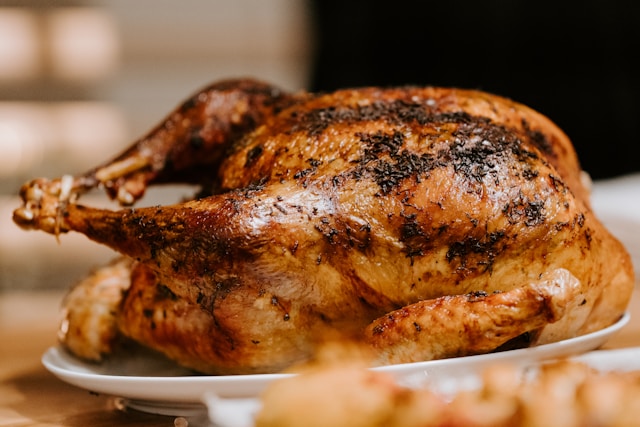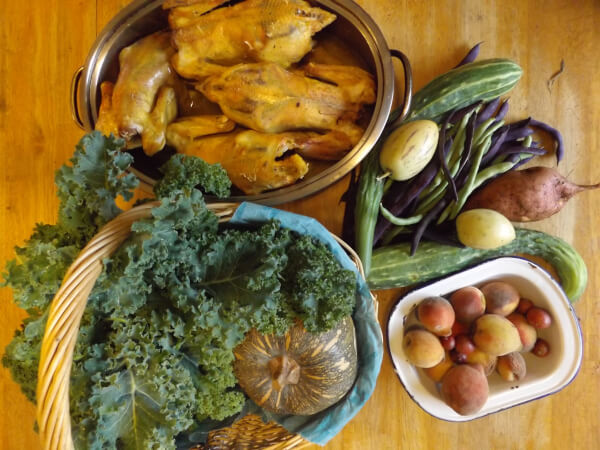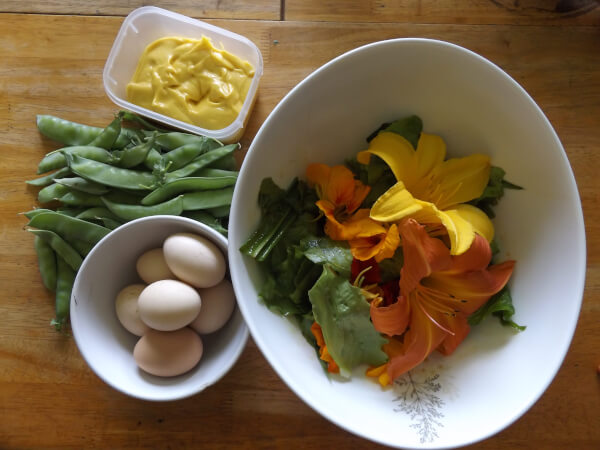What's the value of real food vs industrially produced food? Let's play around with that question, using the example of a roast chicken.
A $9 chicken
Recently, on my way out with the kids for the day, I did something I almost never do.
Rather than take cold lunch meat from home (because I had been focusing on other things and I had no cold meat ready) I bought a cold roast chicken for lunch from our local supermarket. It cost me $9.
I felt torn.
On one hand I was relieved and grateful that the supermarket is there to save me from my own overwhelm and busyness. It enabled me to take a deep breath, relax, and enjoy the day with my kids -- which is very important and not something you can measure in dollars.
On the other hand, I was shocked that a chicken could be produced so cheaply that it could be sold for $9.
As well as being relieved and grateful, I also felt uncomfortable. Even vaguely insulted.
Why?
I felt that way on behalf of the chicken, the people who were absent from its care and lifecycle, and the earth groaning under the factory buildings in which it was bred, incubated and hatched, raised, slaughtered, processed, and packaged by computer operated machines.

An $85 chicken
Our family raises chickens for eggs and meat.
(Not enough, obviously, or there would have been a cooked roast chicken sitting in the freezer ready to be used for lunch on a day like this -- note to self).
Let's compare a homegrown roast chicken with the $9 version from the supermarket.
If we factor in only the cost of feed for our flock and the cost of our time (time is money in this world, right?) then a home grown roast chicken on our table could be said to have cost us around $85 to produce.
That's not a typo. I ran the numbers carefully and then asked my engineer husband check them:
- At least half an hour a day of tending to our flock in person for 6 months at $30/hour -- $67.50.
- Grain at $30/week over 6 months divided by 40 (we have approximately 40 chickens) -- $18.
- $67.50 + $18 = $85.50.
Given that we are very inefficient chicken keepers and get a lot more out of our flock than just chicken meat, and that we're just doing this exercise to see where it takes us, let's just halve that. Let's say $47.00 per roast chicken.
Then let's halve it again because our chickens, although they vary in size a lot, can be up to twice the size of the supermarket one. So now we're at $23.50.
(Our chickens are also twice as tough as supermarket ones -- we could put that down as a benefit measured in extra jaw muscles. True story -- the book Breath: The New Science of a Lost Art says that as our food has become more tender and we have had to work less and less at chewing it, our airways have shrunk and our faces have changed, and not towards the rugged outdoor look.)
Regardless of its chewing value, in dollar terms our chicken is still two and a half times the price of the supermarket variety.

The real value of a chicken
I just tried to put a dollar value on a roast chicken from a back yard flock, but there's no way to factor in the intangible value of the multitude of other things that a home grown roast chicken is connected to.
Just to list some of the benefits our own family has experienced from raising our own chickens (obviously a limited view point but it'll do for demonstration purposes):
- Our deep litter chicken coop provides finished compost by the wheelbarrow load. And when we let them out to forage in the afternoons, the flock provides free farmyard/garden sanitation (manure spreading and insect control).
- When our children were small, caring for broody hens and clutches of eggs gave them meaningful biology lessons. Mama hens and fluffy baby chicks kept them occupied for hours at a time -- and not the way a screen does. And the still little forms that didn't make it out of the nest taught them that life comes hand in hand with death, and that sometimes outcomes are beyond our control.
- Our chicken flock is also a source of meaning, purpose, and dignity for us. It enables us to put food on the table that we're proud of, that we've been intimately involved with, that we've grappled with the ethics of.
- Our chicken flock helps us feed ourselves in an "additive" way--with things like increased soil health and quality of life as by-products--instead of in an "extractive," industrial way.
- Our chicken raising experiences have helped us grow in our sense of responsibility and stewardship toward the land and lives that link directly to what's on the ends of our forks.
One way to sum it up would be to say that a homegrown roast chicken on our table represents a journey from squeamish, and clueless (aka, easily led and largely dependent on others) towards capable, confident, and able to contribute -- even if its just by feeding ourselves a little more and relying a little less on unethical and unsustainable industrial agriculture.

Related reading
Here's a page that links to all my other chicken-related posts, about keeping chickens (and their environment) healthy and happy and also about chicken behavior and what chickens have to do with calling in a kinder, more connected world.
"Regenerative Food Systems vs Industrial Agriculture: Why We Need More Hands in the Soil"
"One Small Serve" - home grown food on a small enough scale

Learn how to grow and use 7 easy, low maintenance, nutritious food plants that are productive for two or more years without replanting.
Growing and processing your own food is a huge task. In One Small Serve, I show you a smaller, simpler approach.
Establish a "one-serve-at-a-time" home-grown food habit you can maintain.
Includes a series of free extra tips + free email support
Please scroll to the bottom to comment 🙂
would you like to receive new posts in your inbox?
after clicking subscribe, sit tight for a confirmation message
